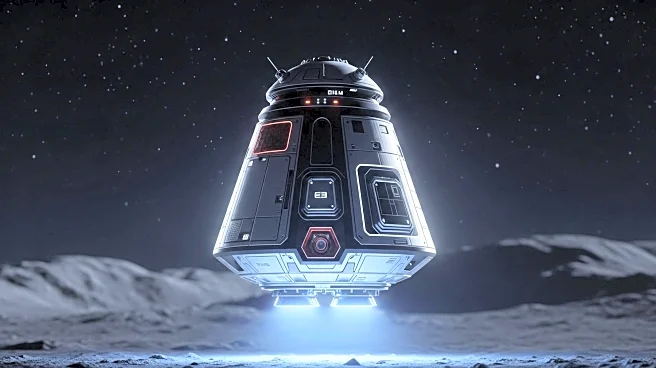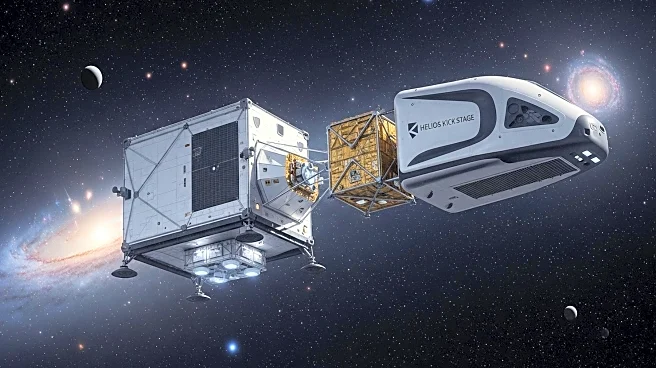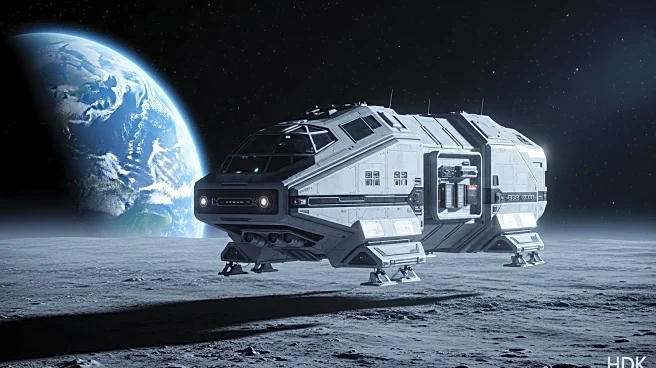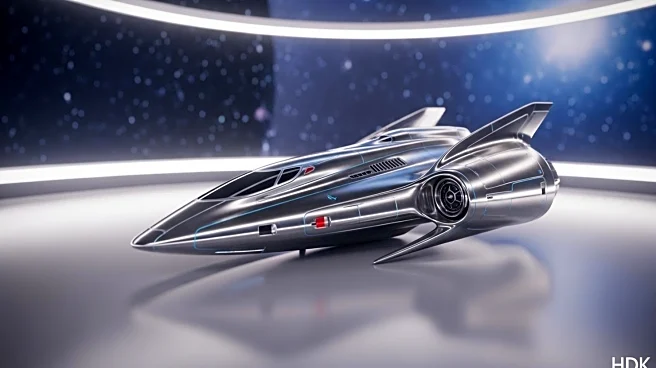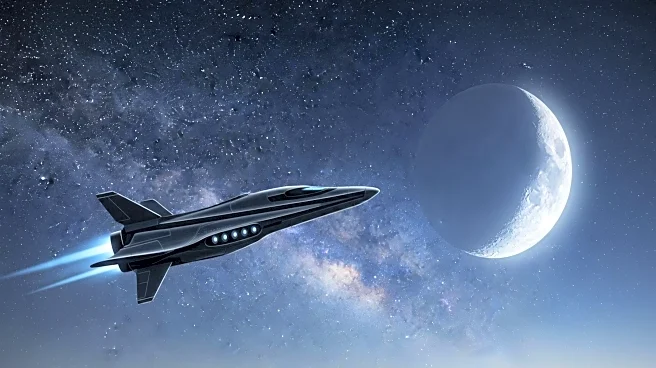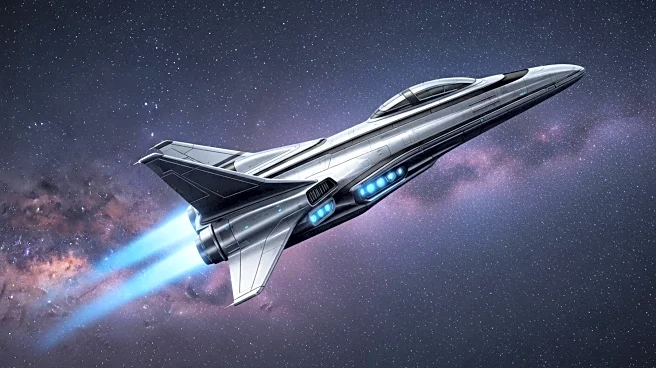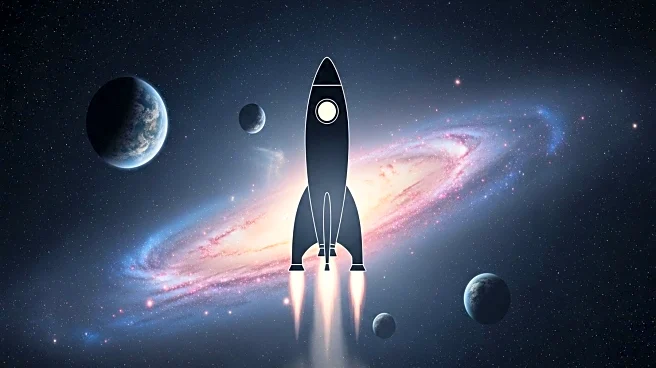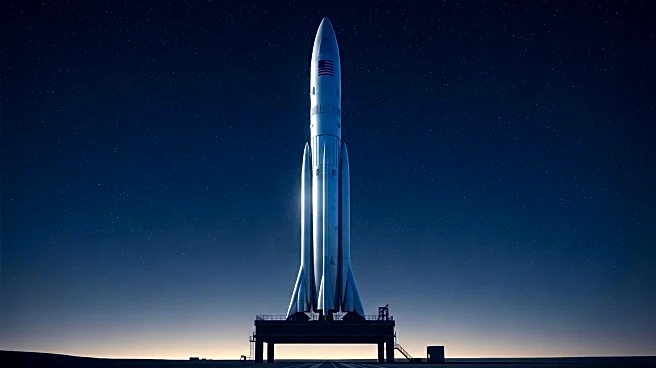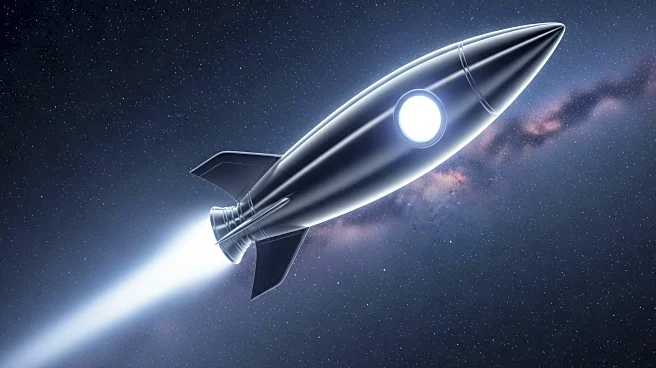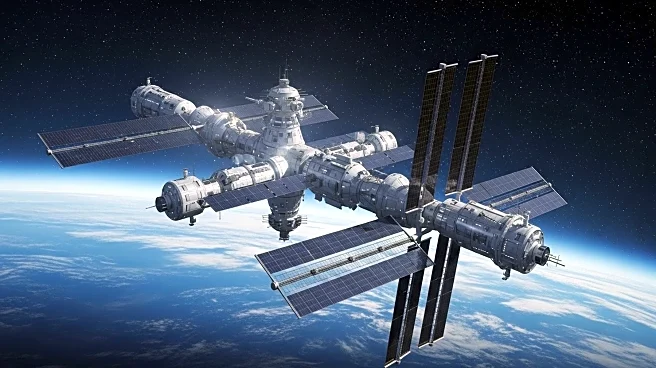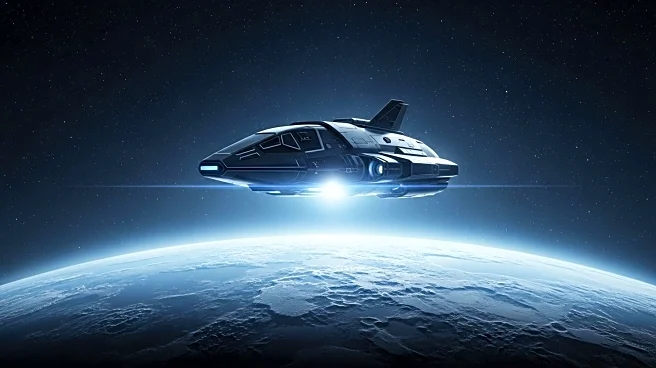What's Happening?
Impulse Space has announced a strategic plan to transport up to 6 tons of cargo to the moon annually, starting as early as 2028. The company intends to utilize a new lunar lander paired with its 'Helios'
high-energy kick stage, which will enable the delivery of payloads to the lunar surface without the need for orbital refueling. Founded by former SpaceX propulsion chief Tom Mueller, Impulse Space aims to address a gap in lunar payload logistics, targeting cargo sizes that are too large for NASA's Commercial Lunar Payload Services program but too small for human-rated landers being developed by SpaceX and Blue Origin. The proposed system involves launching the lander and kick stage on a standard rocket, deploying them in low Earth orbit, and transporting the lander to low lunar orbit within seven days. The lander would then descend to the lunar surface, carrying payloads such as rovers, habitat modules, and communication systems.
Why It's Important?
This development is significant as it could revolutionize lunar logistics by providing a cost-effective solution for mid-sized payload deliveries. Impulse Space's initiative could facilitate the deployment of essential infrastructure on the moon, supporting future lunar exploration and habitation efforts. The ability to transport larger payloads efficiently could accelerate scientific research and commercial activities on the lunar surface. Additionally, this plan positions Impulse Space as a key player in the burgeoning space industry, potentially attracting partnerships and investments from entities interested in lunar exploration. The success of this initiative could also stimulate technological advancements in spacecraft engine development, contributing to the broader space exploration goals of the United States.
What's Next?
Impulse Space is already developing the lunar lander engine, which uses the same fuel combination as its Saiph thrusters. The Helios kick stage is well into development, with its first flight scheduled for late 2026. The company anticipates multiple Helios flights per year by 2028. As the project progresses, Impulse Space will need to address execution risks, such as ensuring the lunar lander engine is throttleable, restartable, and capable of providing precise control in space. The company has expressed readiness to adapt its plans based on industry demand and interest, indicating potential adjustments to its delivery schedule and capacity.
Beyond the Headlines
Impulse Space's plan could have broader implications for international space collaboration and competition. As the company fills a critical gap in lunar logistics, it may influence global strategies for lunar exploration, prompting other nations and private entities to enhance their capabilities. The initiative also raises questions about the sustainability and environmental impact of increased lunar activity, as more frequent deliveries could affect the lunar surface and its environment. Ethical considerations regarding the commercialization of space and the preservation of lunar heritage sites may also emerge as the project advances.
